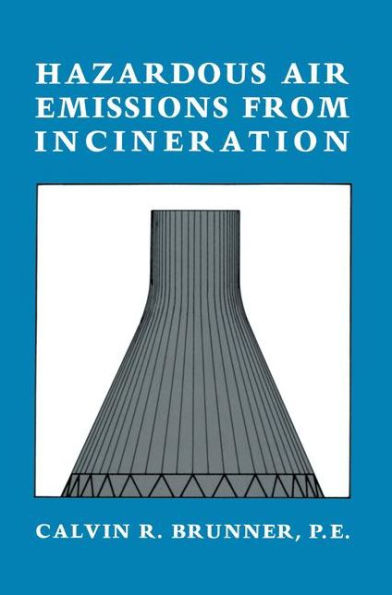Hazardous Air Emissions from Incineration
This is a comprehensive handbook on the relationship of air pollution to incineration. Incineration is becoming the predominant method of dealing with many of our waste products and its most significant envi ronmental impact is on the air. This book includes information on emissions as well as on equipment design. Two chapters deal with the regulations governing incinerator emissions as well as the thermal destruction of hazardous wastes. Four chapters describe the nature of the emissions generated by the incin eration process. These particulate, gaseous, and odor emissions, are hazardous as well as deleterious to public well-being and aesthetics. Also included is a complete and timely discussion of dioxin generation and discharges. Three chapters describe the incineration equipment in general use today and methods of calculating gas flows and air discharges from these systems. Five chapters discuss the types of gas cleaning equipment available with sizing information and expected efficiencies. The nature of the gas cleaning process is discussed in detail. Criteria for selection of the opti mum system for a particular application is also included. The dispersion of an atmospheric discharge to the surrounding areas and/or communities is a vital concern in assessing the nature of that discharge and its impact, or potential hazards. A chapter is devoted to a relative simple method of estimating atmospheric dispersion.
1101307706
Hazardous Air Emissions from Incineration
This is a comprehensive handbook on the relationship of air pollution to incineration. Incineration is becoming the predominant method of dealing with many of our waste products and its most significant envi ronmental impact is on the air. This book includes information on emissions as well as on equipment design. Two chapters deal with the regulations governing incinerator emissions as well as the thermal destruction of hazardous wastes. Four chapters describe the nature of the emissions generated by the incin eration process. These particulate, gaseous, and odor emissions, are hazardous as well as deleterious to public well-being and aesthetics. Also included is a complete and timely discussion of dioxin generation and discharges. Three chapters describe the incineration equipment in general use today and methods of calculating gas flows and air discharges from these systems. Five chapters discuss the types of gas cleaning equipment available with sizing information and expected efficiencies. The nature of the gas cleaning process is discussed in detail. Criteria for selection of the opti mum system for a particular application is also included. The dispersion of an atmospheric discharge to the surrounding areas and/or communities is a vital concern in assessing the nature of that discharge and its impact, or potential hazards. A chapter is devoted to a relative simple method of estimating atmospheric dispersion.
109.99
In Stock
5
1

Hazardous Air Emissions from Incineration
222
Hazardous Air Emissions from Incineration
222Hardcover(1985)
$109.99
109.99
In Stock

Product Details
| ISBN-13: | 9780412007217 |
|---|---|
| Publisher: | Springer US |
| Publication date: | 09/26/1985 |
| Edition description: | 1985 |
| Pages: | 222 |
| Product dimensions: | 6.10(w) x 9.25(h) x 0.02(d) |
From the B&N Reads Blog
